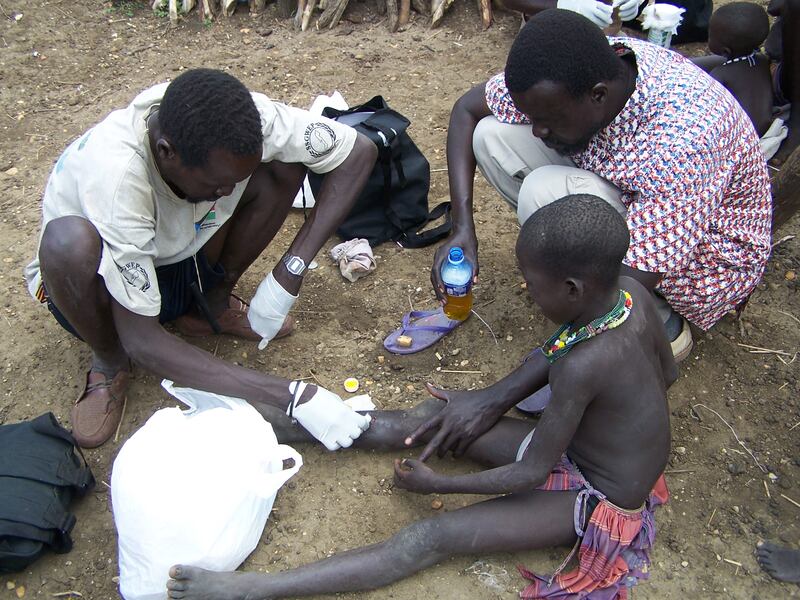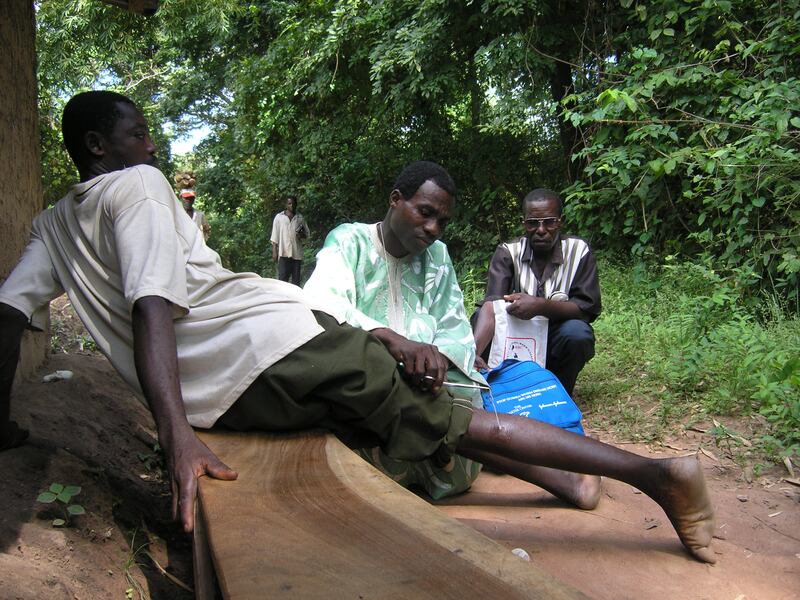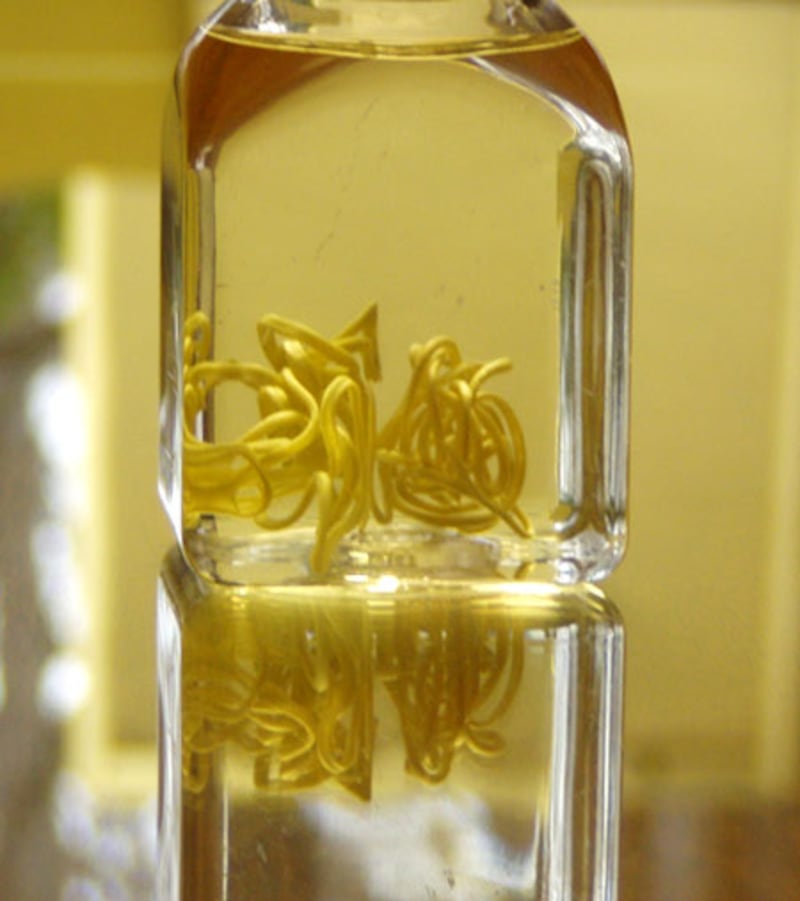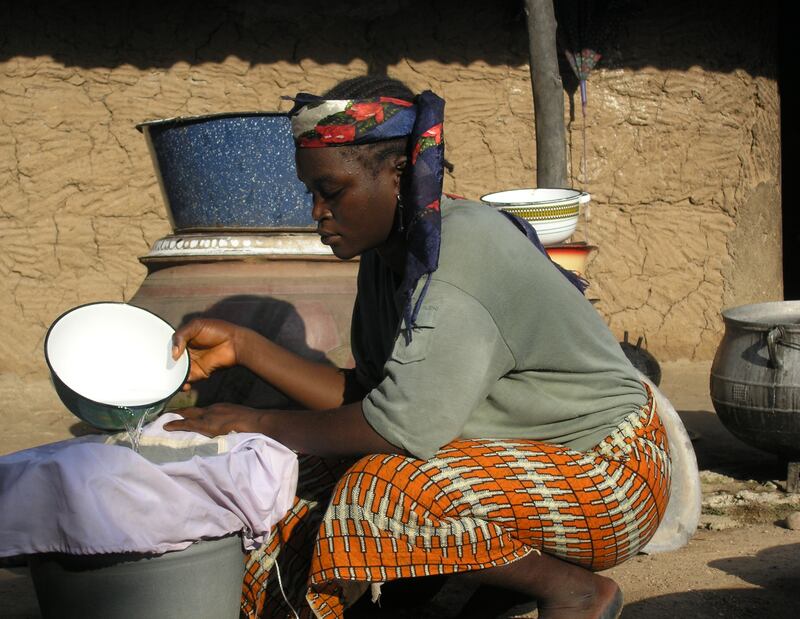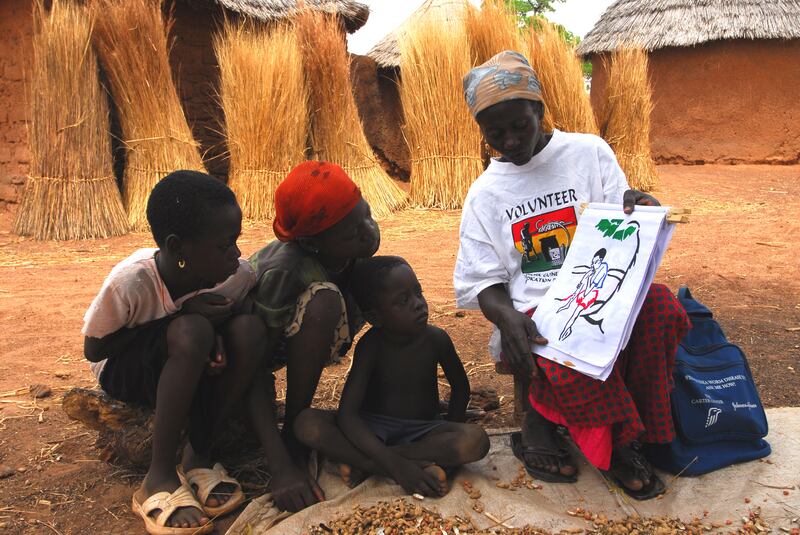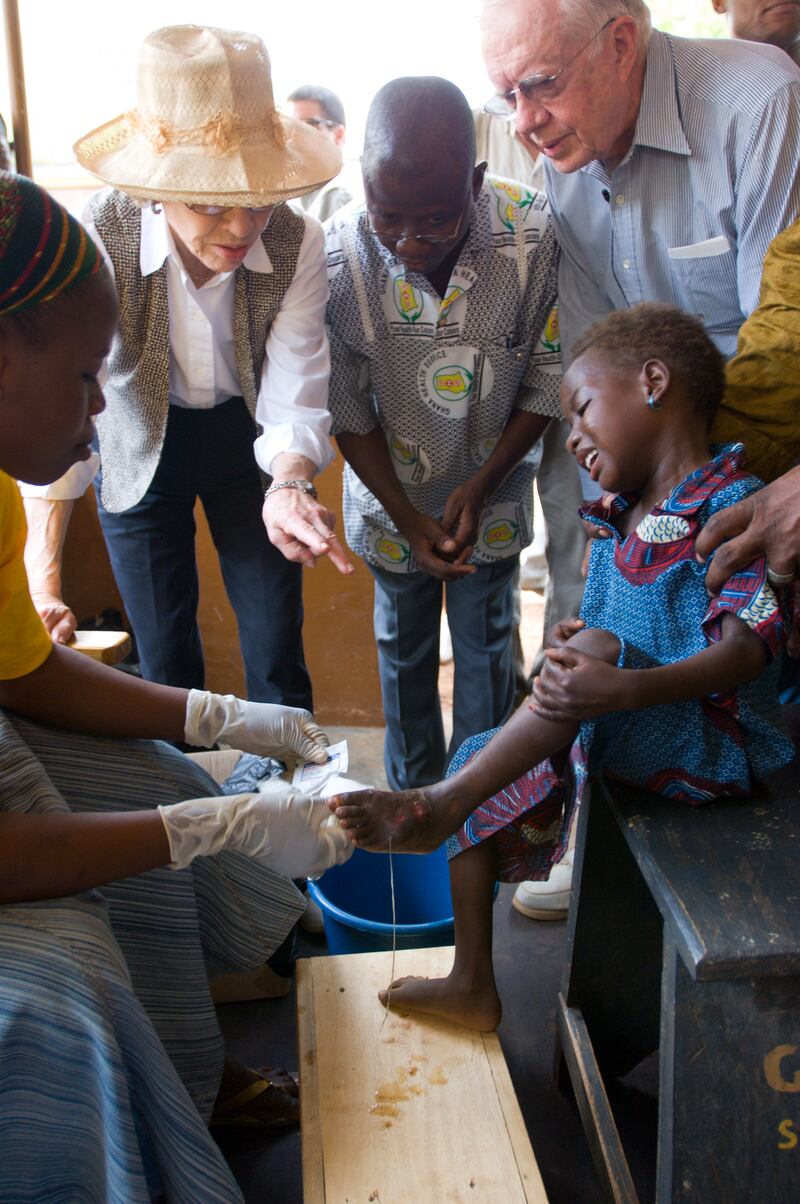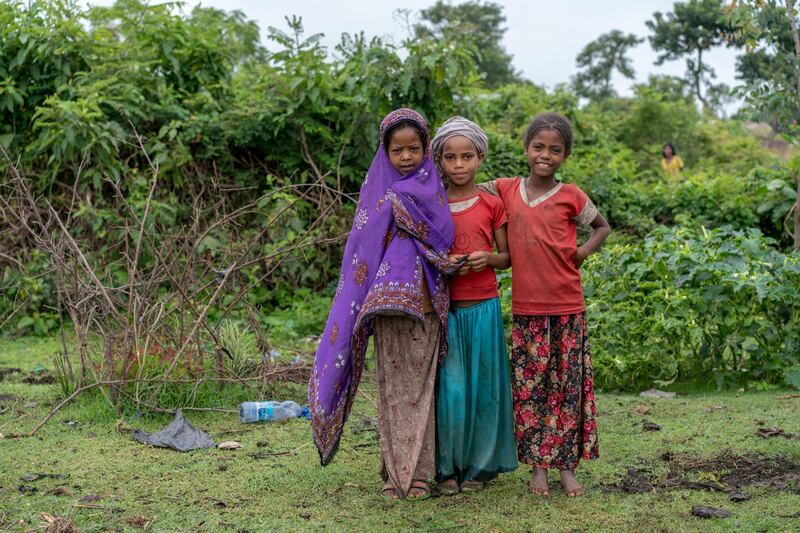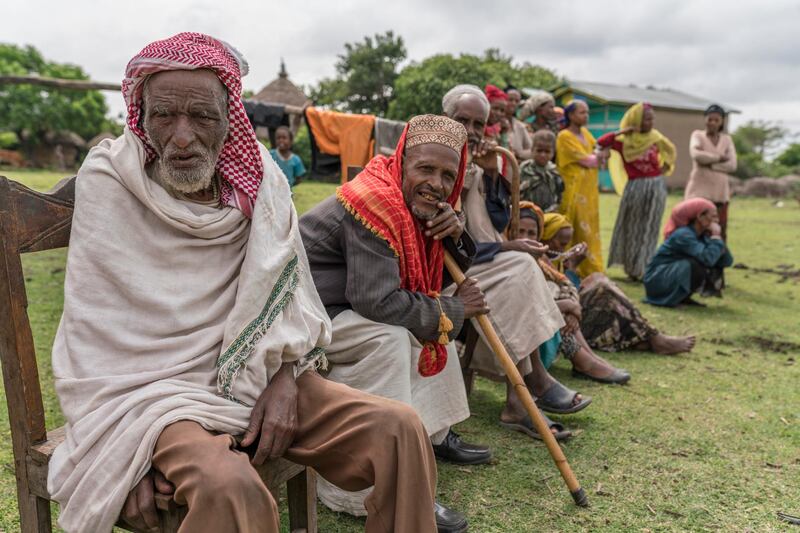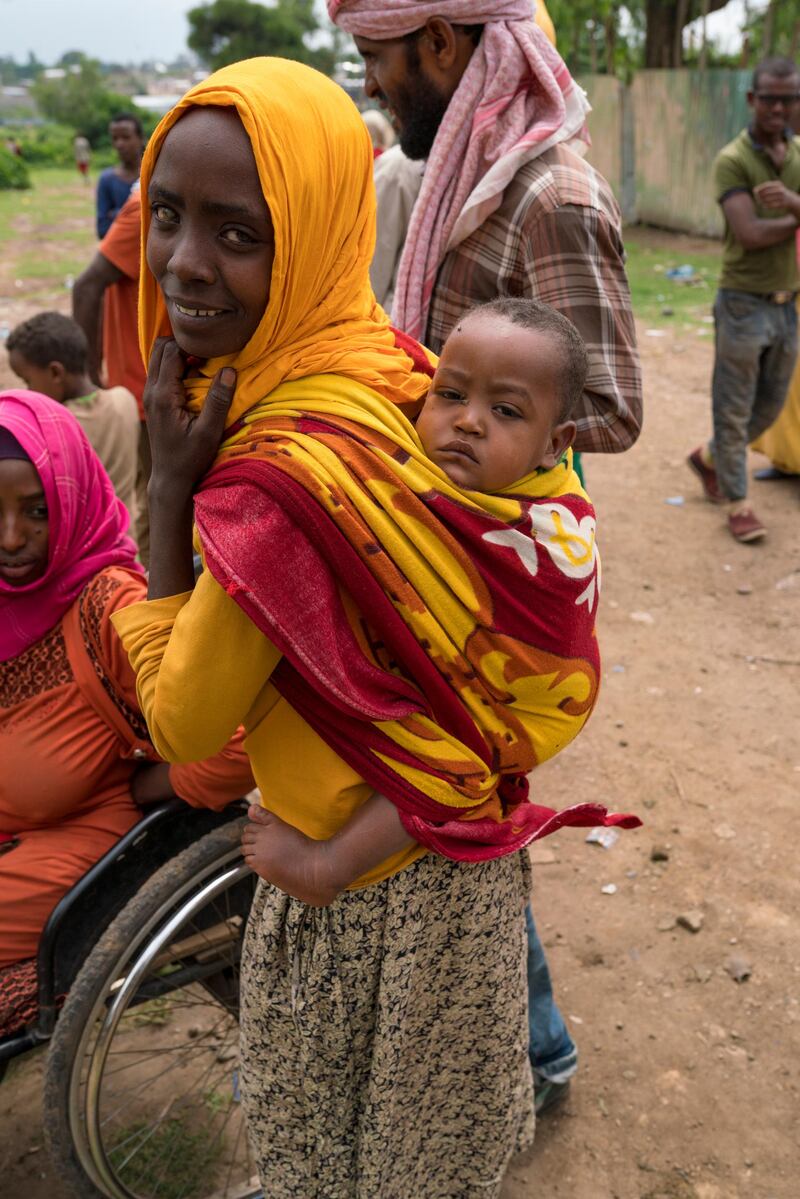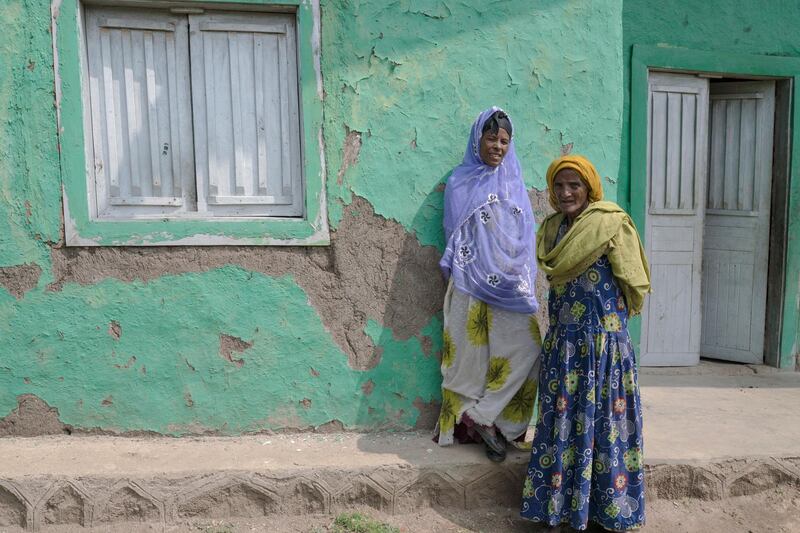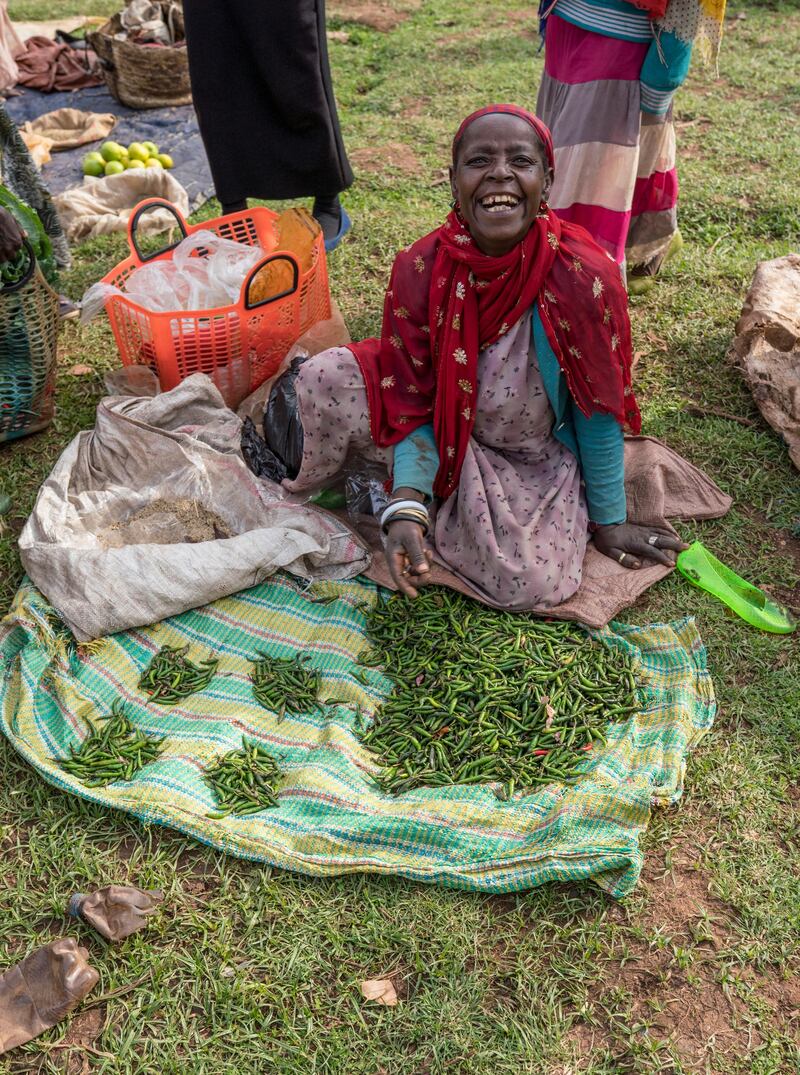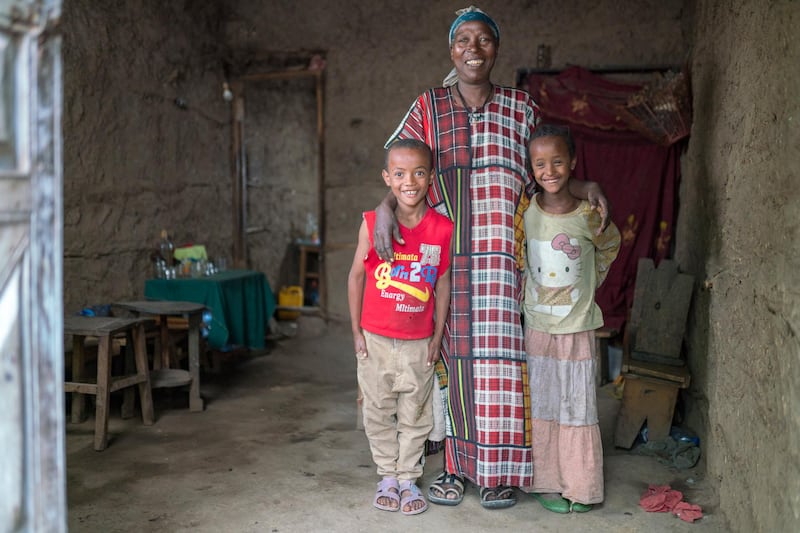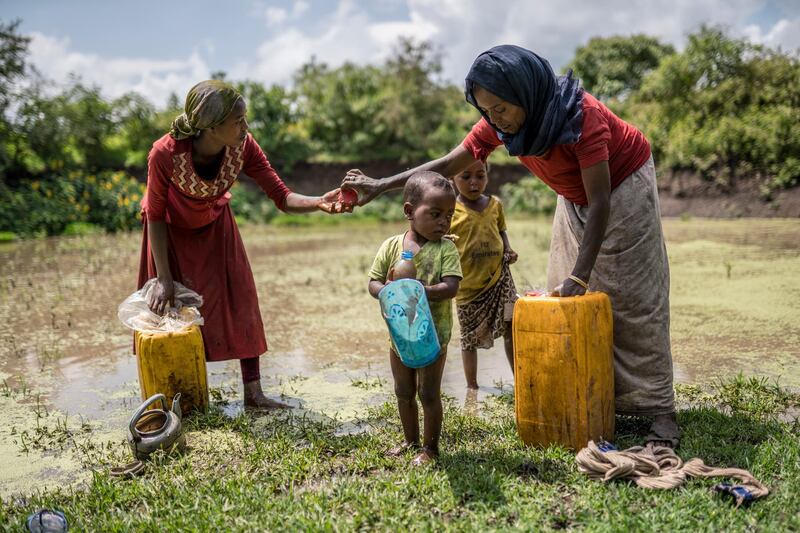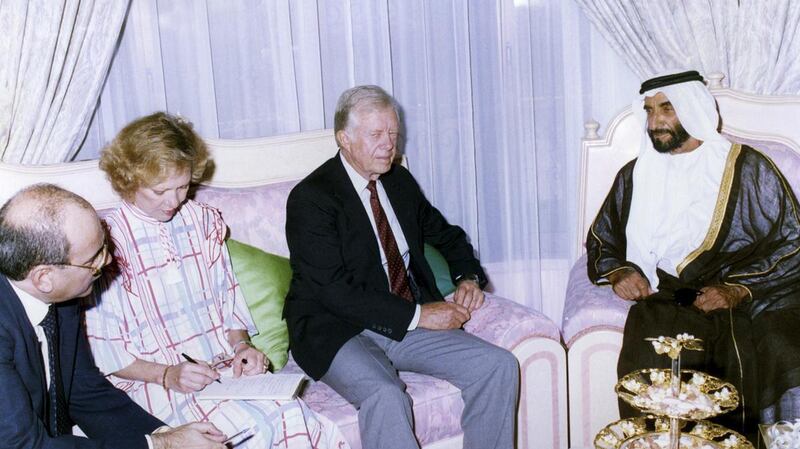Guinea worm disease is on track to become the second human disease, and the first parasitic disease, to be eradicated, as case numbers fall to an all-time low.
In 1986, global figures put the number of annual cases of Guinea worm at 3.5 million in 21 countries in Africa and Asia.
Last year, that figure dropped to an historic low of 14 and is now present in just four countries – South Sudan, Ethiopia, Chad and Mali.
The parasitic infection is caused by a worm called Dracunculus medinensis. It measures about a metre in length when fully grown.
People become infected when they drink water contaminated with tiny water fleas that carry Guinea worm larvae. Human beings and animals can also contract the disease by eating raw fish that temporarily harbour the larvae.
For more than 30 years, The Carter Centre, founded by former US president Jimmy Carter, has been on a mission to wipe out this ancient disease. If progress continues, it is poised to become the second human disease in history to be eradicated – smallpox was the first.
“We’re incredibly proud of this number, especially when you reflect on the reality that there are almost eight billion people in the world,” said Adam Weiss, director of the Guinea Worm Eradication Programme at The Carter Centre.
“Many people look at the progress and say ‘oh, you're almost done, why not move on to something else?’ but that is the polar opposite of what the global community needs to do, as it relates to the final cases, which are far beyond the end of the road.
“These [cases are present] in very marginalised, disenfranchised populations and so really pulling together to help see it done will prevent any kind of recrudescence or resurgence of the disease.”
While there is no medicine to cure Guinea worm nor a vaccine to prevent it, disease transmission has been drastically reduced through community-based interventions and awareness campaigns focusing on behavioural changes.
In pictures - Guinea worm disease
In 2021, seven human cases of the disease were reported in Chad, a 42 per cent reduction from 12 the previous year
Four cases were reported in South Sudan, two in Mali, and one in Ethiopia. Angola and Cameroon, which each had one human case in 2020, had none in 2021.
Hard to detect
About 90 per cent of infections present after a 10 to 14-month incubation period, but the person has no idea they are carrying a parasite because there are no signs or symptoms.
In many cases, sufferers experience severe itching or a burning sensation and often immerse the limb or body in water for relief.
This stimulates the worm to release its larvae into the water and renew the cycle of infection and transmission.
“Once the parasite emerges, or just before it emerges, patients can present with a painful blister or lesion on the skin,” Mr Weiss said.
“It’s only at that point that we can detect it. In my 15 years on the programme I have seen them emerge from all over the body, but in the majority of cases they present in the lower extremities, such as legs and feet.
“With other diseases that the world is trying to tackle, often they are picked up through patient diagnostics, or there is a vaccine or therapeutic to make the suffering less dire.
“With Guinea worm you just don't have that luxury, so we’re fighting an uphill battle.”
Extraction can take months
To extract the worm can take days, weeks, or in some cases, months.
Once part of the worm begins to come out of the wound, the rest of the worm can be pulled out only a few centimetres at a time by winding it around a piece of gauze or a small stick.
“I’ll tell you why it’s personal to me," Mr Weiss said. "In 2003, when I was assigned to Northern Ghana as a Peace Corps volunteer, that's when I first came to meet Guinea worm.
“In the community I was assigned to there were 100 people with the disease and I saw the parasite come out of every part of the human body, male, female and children.
“I saw the pain first-hand and I've never been able to erase that.”
The Carter Programme has worked closely with the community and the ministries of health in each country, along with help from international partners, including the UAE. Together they have also been able to reduce the number of infections in animals, mainly dogs.
Guinea worm infections in animals fell by 45 per cent in 2021, with just over 1,000 cases reported.
Chad reported infections in 790 domestic dogs and 65 domestic cats, Cameroon reported 10 infected dogs along its border with an area endemic in Chad, and Mali reported 16 infected dogs and one cat. Ethiopia reported two infected dogs and one cat.
To achieve total eradication, the disease needs to be wiped out in people and animals.
Mr Weiss said in the absence of “a curative medicine or vaccine”, Guinea worm disease eradication is based on interrupting the worm’s life cycle through changed human behaviour.
“It is about teaching people, communities, to filter all drinking water and keep anyone with an emerging worm from entering water sources,” he said.
“We will continue to do everything to stop transmission and infections.
“We offer cash rewards to community members who alert the local health authority of an active case and this has been very successful so far.”
If a country presents with no cases in any given year, it has to go through a pre-certification stage, which is a three-year period where teams continue surveillance activities.
Only after this time, if cases continue to report at zero, can the country be removed from the list of locations where Guinea worm is present.
Samuel Makoy Yibi is the national co-ordinator for the Guinea Worm Eradication Programme for the Ministry of Health in the Republic of South Sudan and has worked in the field for 14 years.
In 2008, in a remote village in the country, he said he came across a young girl who was infected with the parasite.
“I cannot forget the face of that small girl because she was in pain,” he said.
“In the process of removing the worm, you could see her crying and crying and her wound was badly infected.
“I was happy we were able to remove the worm, but I was also very distressed by the level of pain and suffering I saw that small girl go through.”
He said the campaign in South Sudan is not easy, because many of the villages where the disease is most prevalent are remote.
But he has walked the length and breadth of the country to battle the parasite and said he will continue to do so until it is eradicated.
UAE a close ally
Last year, Sheikh Mohamed bin Zayed, Crown Prince of Abu Dhabi, pledged $10 million to The Carter Centre to mark the 30th anniversary of its partnership with the UAE in fighting disease.
The partnership began decades ago when the UAE's Founding Father, Sheikh Zayed, invited former US president Jimmy Carter to the UAE for the first time.
In the meeting, Mr Carter discussed the initiative to eradicate a parasitic disease causing devastation across large parts of Africa and Sheikh Zayed responded with a substantial donation to the centre, which began a decades-long commitment to disease eradication by Abu Dhabi's ruling family.
